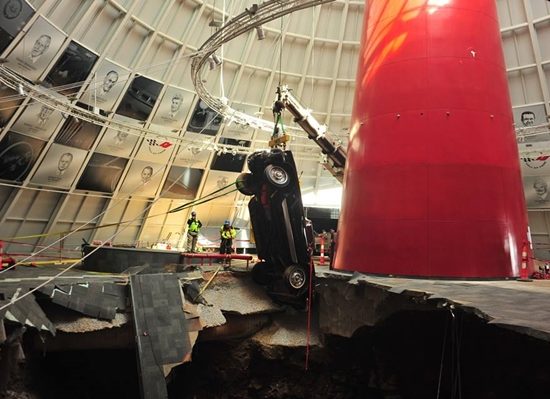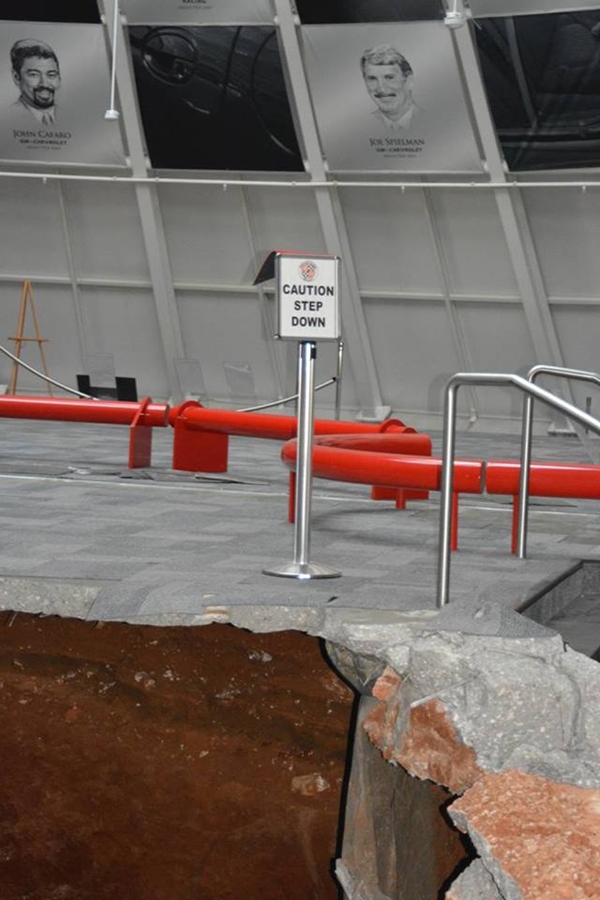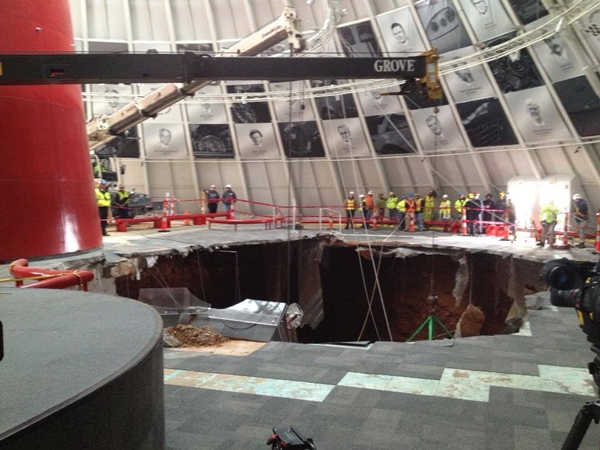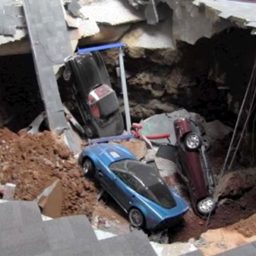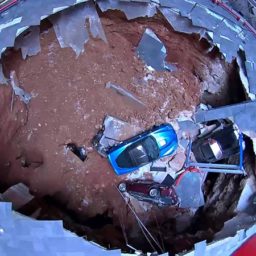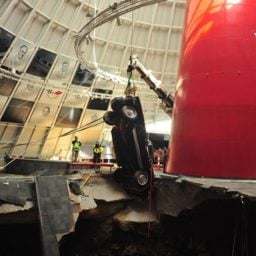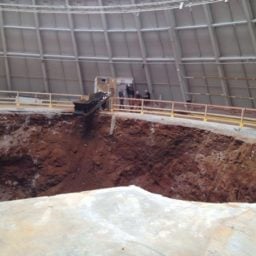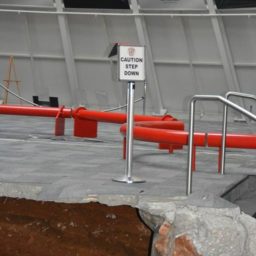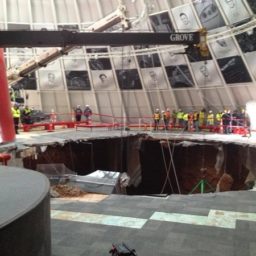The awesome sinkhole that swallowed up eight cars at the National Corvette Museum in Bowling Green, Kentucky, won’t become a permanent fixture of the museum after all, reports Reuters.
Initially, the museum had planned to preserve part of the 60-foot-deep chasm, which had become a major draw for museum visitors (see “Corvette Museum Embraces Massive Sinkhole“). In the aftermath of the February incident, triggered by underground caves beneath the institution, museum attendance and revenue had both risen about 60 percent.
“We really wanted to preserve a portion of the hole so that guests for years to come could see a little bit of what it was like,” said museum executive director Wendell Strode in the statement announcing the disappointing decision. “But after receiving more detailed pricing, the cost outweighs the benefit.”
Museum spokesperson Katie Frassinelli told CNN that filling in the whole hole would cost $1 million less that keeping part of it intact, and that ensuring its safety would have required retaining walls and other construction interventions. “That’s no longer a naturally occurring, interesting sinkhole.”
Five of the eight cars that fell into the pit were too damaged to repair, but will remain on display as a reminder of the sinkhole that once was. The other three, including the millionth car produced by the Corvette company, a white 1992 convertible, will be restored to mint condition.
Meanwhile, last month saw a veritable parade of luxury vehicles as Corvettes displaced by the incident began the journey back to Kentucky, traveling along Route 66 along with a large number of privately owned Corvettes. As reported by News OK, the caravan was expected to grow to 500 cars by the time it hit Bowling Green.
No word yet on how the sinkhole incident has effected the burgeoning luxury car market (see “Vintage Cars Overtake Art on Luxury Asset Racetrack“).
If you’re disappointed that you never got to see the cavernous chamber in the middle of the Corvette Museum in person, perhaps this YouTube video of security footage from the sinkhole’s opening will cheer you up:

